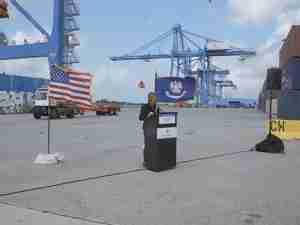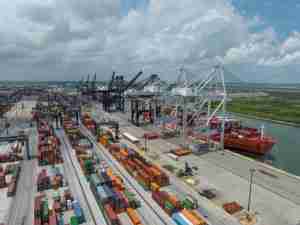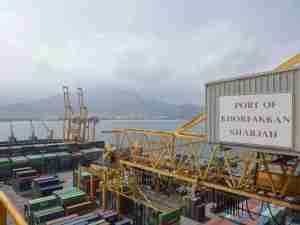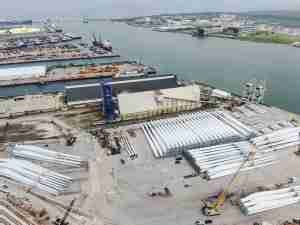Governor, MPA, highstar capital, CSX officials outline Baltimore’s future at May seminar
By: Karen Thuermer | May 26 2011 at 08:00 PM | Ports & Terminals
By Karen E. Thuermer, AJOT
The New York Yankees may have beaten the Baltimore Orioles on May 18 in a baseball game attended by friends and employees of the Port of Baltimore. But those who watched the game from the Maryland Port Administration’s skybox at Camden Yards know all too well that New York’s glee may not always be shared when it comes to the Orioles hometown seaport.
That’s because the Port of Baltimore will soon give the Port of New York/New Jersey and other ports up and down the Eastern seaboard, a run for first base where seaport rankings are regarded as each throws its pitch in the heightening round for the competitive steamship business. The catalyst: the opening of the new widened Panama Canal in 2014 that will accommodate larger steamship vessels on the trades and improvements at the Port of Baltimore.
According to Maryland Port Administration (MPA), Highstar Capital, CSX and other officials that included Maryland’s Governor Martin O’Malley, the fact the Port of Baltimore offers both a 50-foot deep channel and a 50-foot berth gives it advantages only paralleled by Virginia’s Port of Norfolk. On the other hand, the Port of New York/New Jersey may also offer 50-foot water but has flyover (bridge height) restrictions.
Meanwhile, once CSX’s $1 billion National Gateway project opens with its intermodal hub in Northwest Ohio (ironically, in a town called North Baltimore) the Port of Baltimore will offer fast intermodal connections to Midwest markets and beyond. Only the Port of Norfolk, which boasts also a 50-foot channel and berth and its Heartland Corridor, can also make this claim.
But the Port of Baltimore offers additional benefits. Those were outlined in detail by a number of speakers at a seminar held on May 18 and sponsored by the Port of Baltimore, CSX and Ports America Chesapeake. That seminar was then followed by the outing to the Orioles versus Yankees game at Baltimore’s Camden Yards.
Attending the seminar, held atop Baltimore’s World Trade Center, were MPA and Ports America Chesapeake officials, as well as ACL, Columbia Coastal Transport, CSAV, CSX, Evergreen, Highstar Capital, Hyundai Merchant Marine, Maersk, MOL, MSC, and NSCSA representatives. Also attending were shippers, retailers, logistics operators and freight forwarders representing companies that included Emo Trans, Expeditors, MTC Logistics, Panalpina, Agmet, Ames True Temper, Bob’s Discount Furniture, Canusa Hershman Recycling, Case New Holland, Caterpillar, Eastland Foods, The Fishin Company, The Great Fish Company, Harmon Recycling, McCormick & Co., Perdue, Pier 1 Imports, and World Kitchen. A number of journalists, including representatives from AJOT, politicians, and economists were also in attendance.
Seminar Remarks Leading off the event were remarks from MPA’s Executive Director James J. White, followed by Christopher Lee, managing director of Highstar Capital, Governor O’Malley, and Fredrick Eliasson, CSX vice president of emerging markets.
Governor O’Malley praised the MPA and the public private partnership (P3) the Port of Baltimore has entered into with Highstar Capital.
Highstar Capital is 100 percent owner of Ports America, the largest independent port operating company in the United States.
“Most public private partnerships do not pan out,” he said. “But when this one came along, I saw this as a win-win.”
MPA’s White praised Governor O’Malley’s support of MPA and Ports America. In November 2009, the two entered into a 50-year concession agreement regarding the Port of Baltimore’s Seagirt Marine Terminal.
Already, Ports America is spending over $100 million on the construction of a new 50-foot berth at Seagirt Terminal. That berth is already nearly 50 percent complete, and is ahead of schedule and under budget.
“We will be fully operational two years or more before the Panama Canal widening project opens in 2014,” Lee emphasized.
As a result, shipping customers such as MSC and Evergreen will be able to bring containers to the Port of










